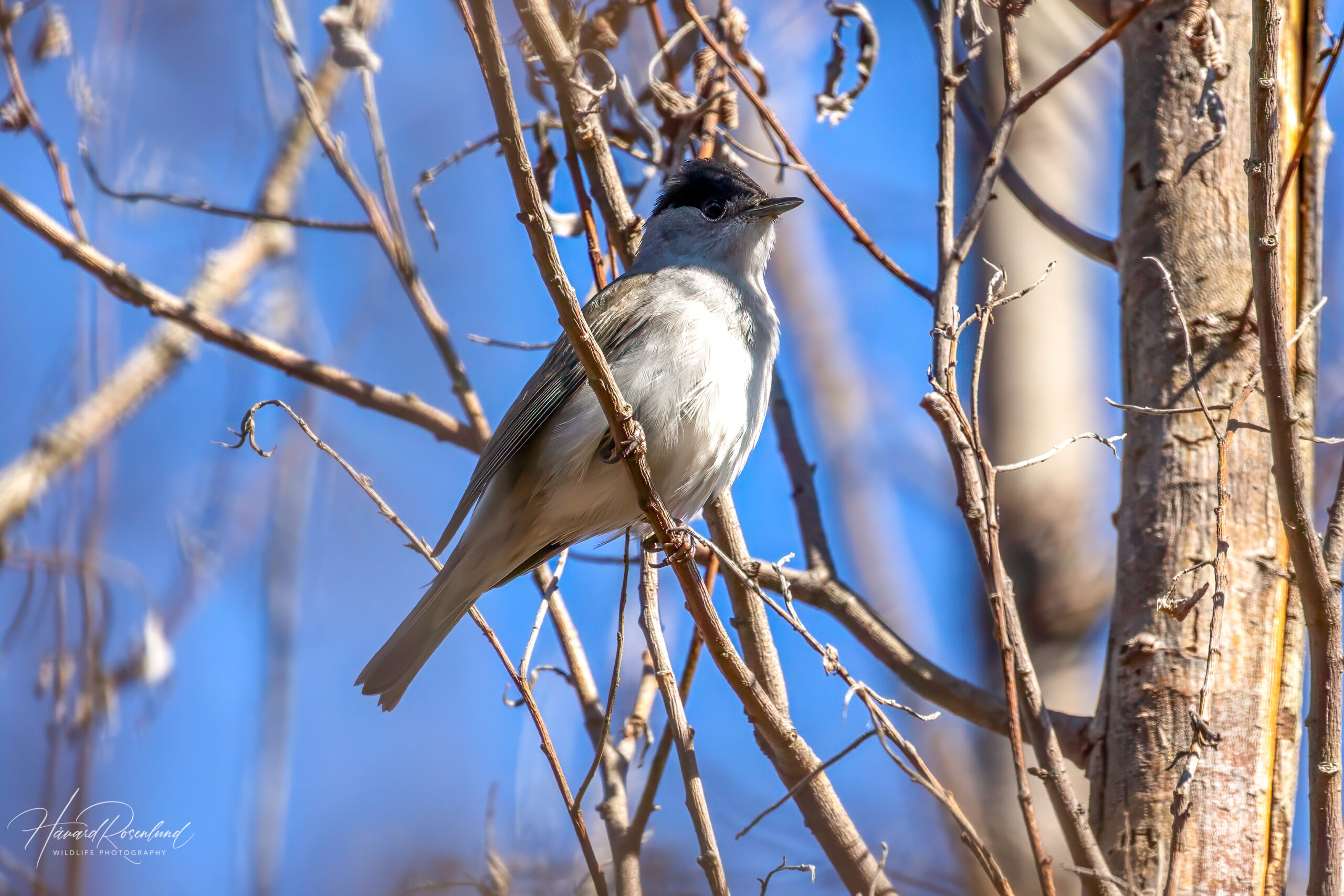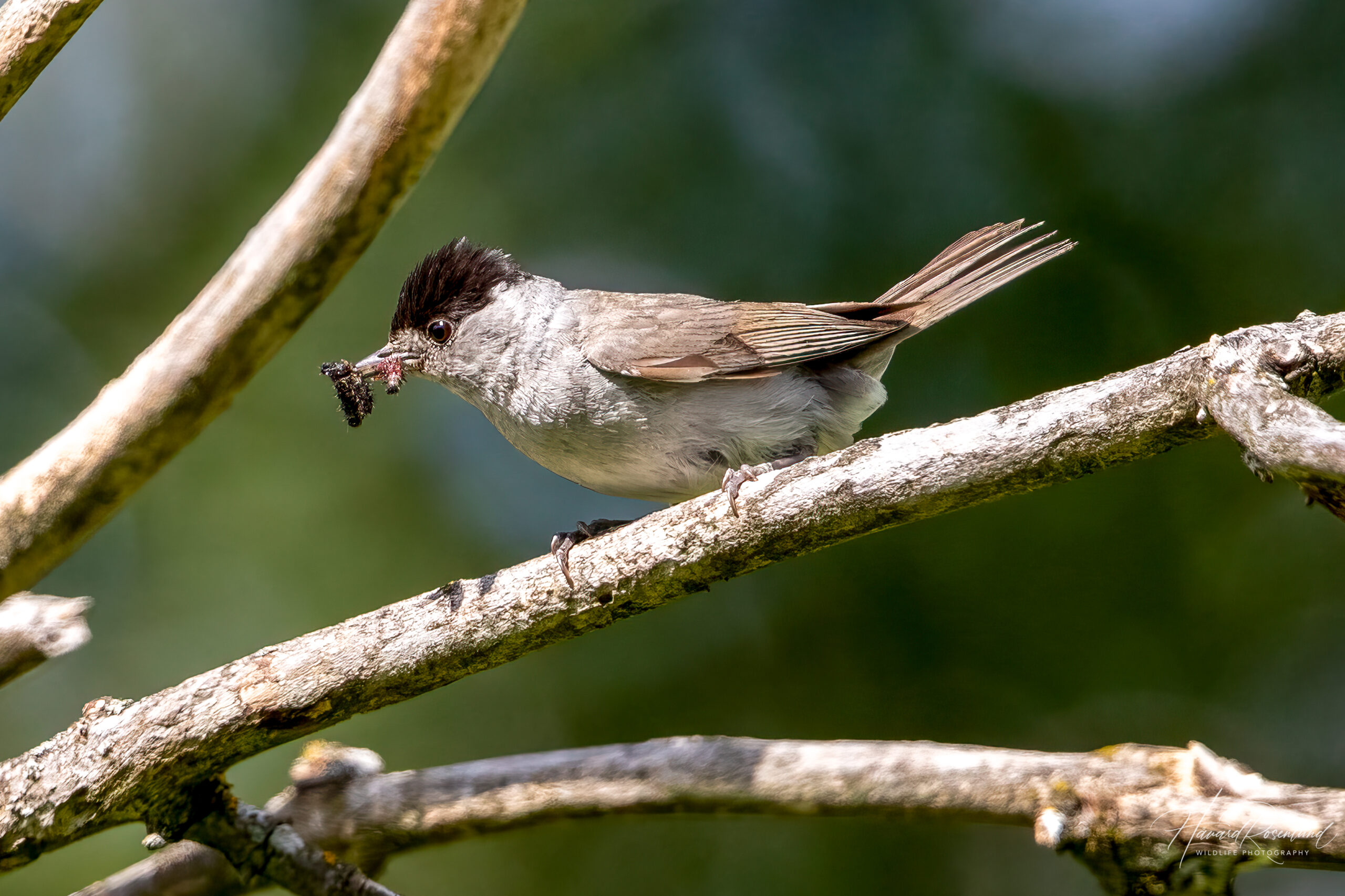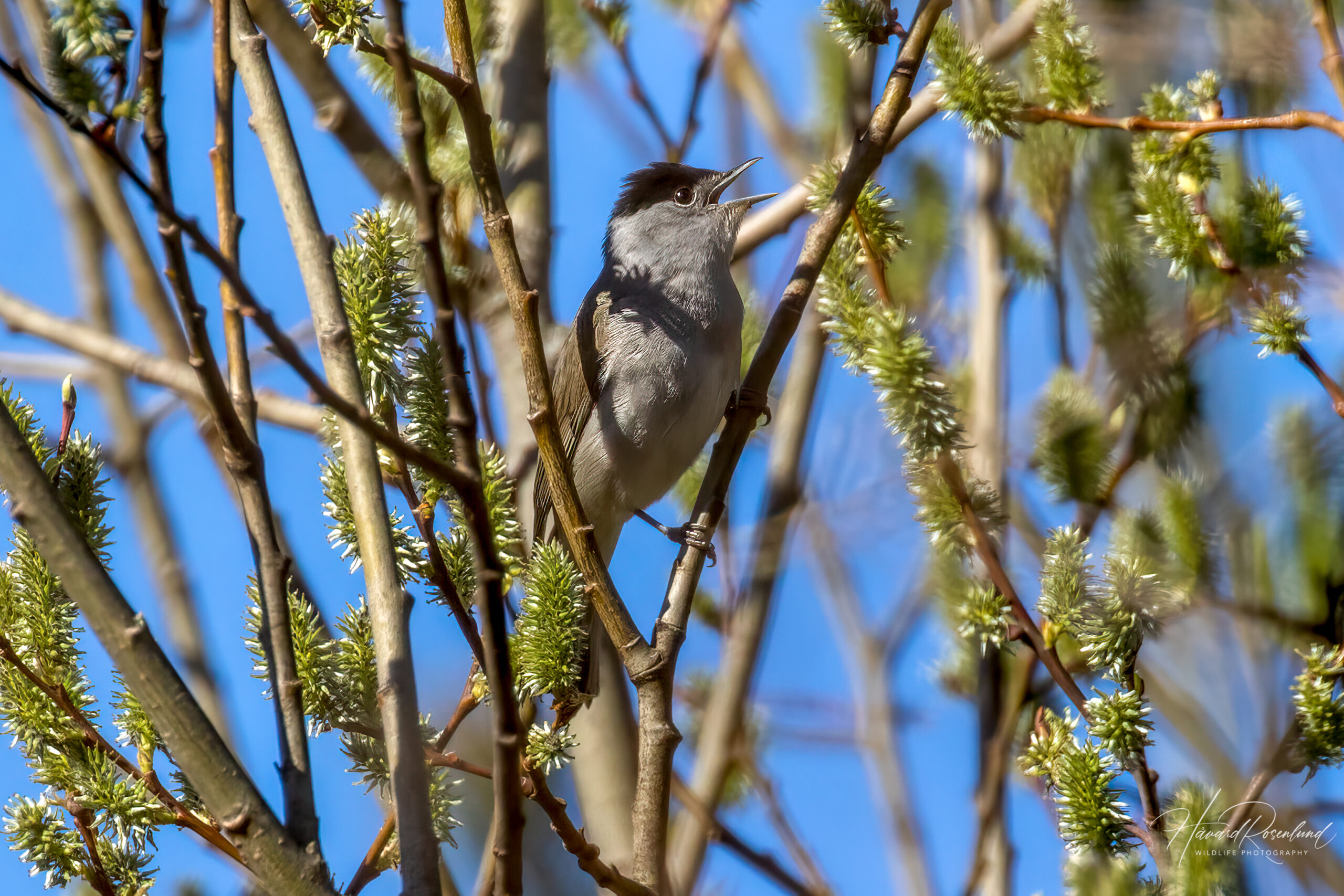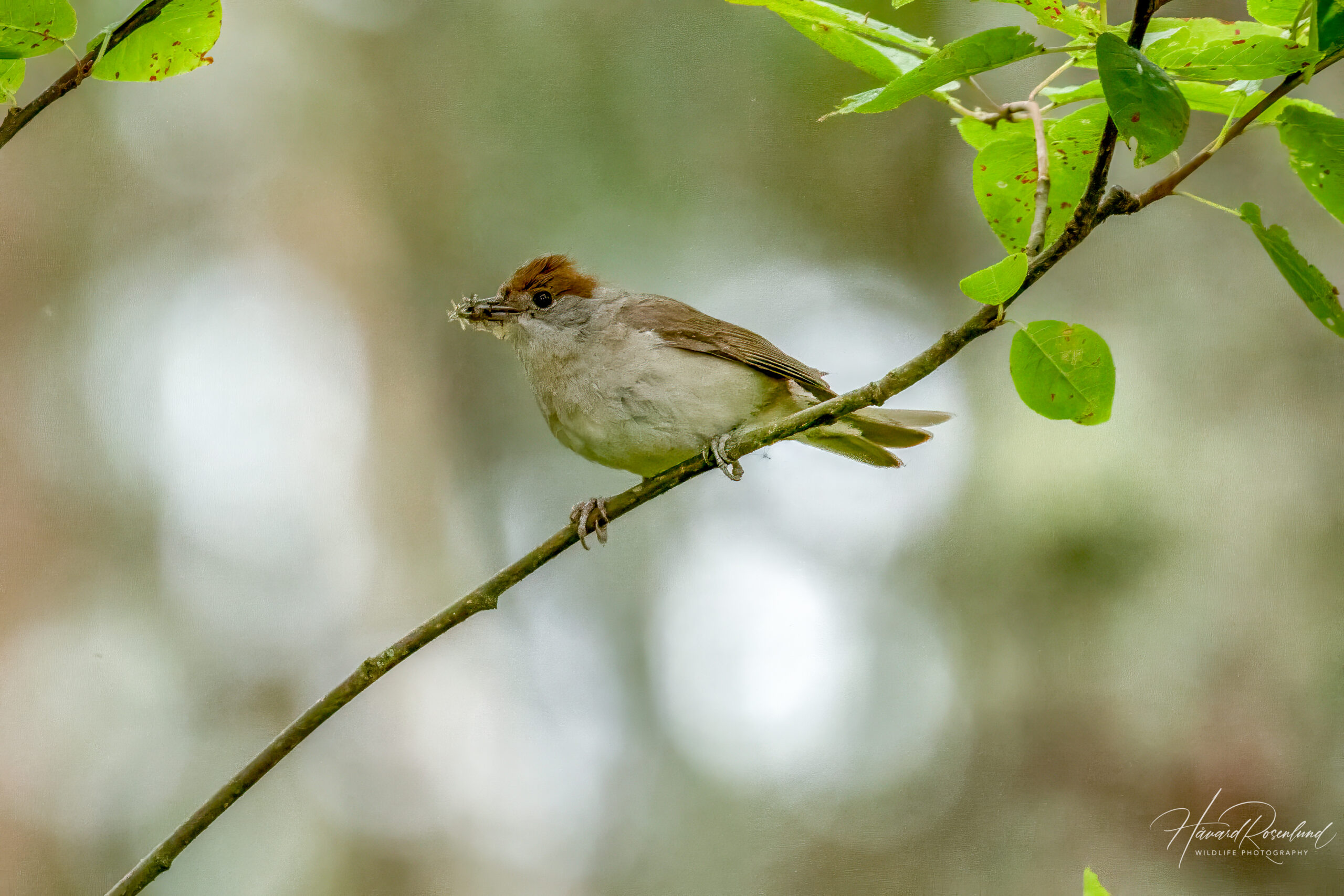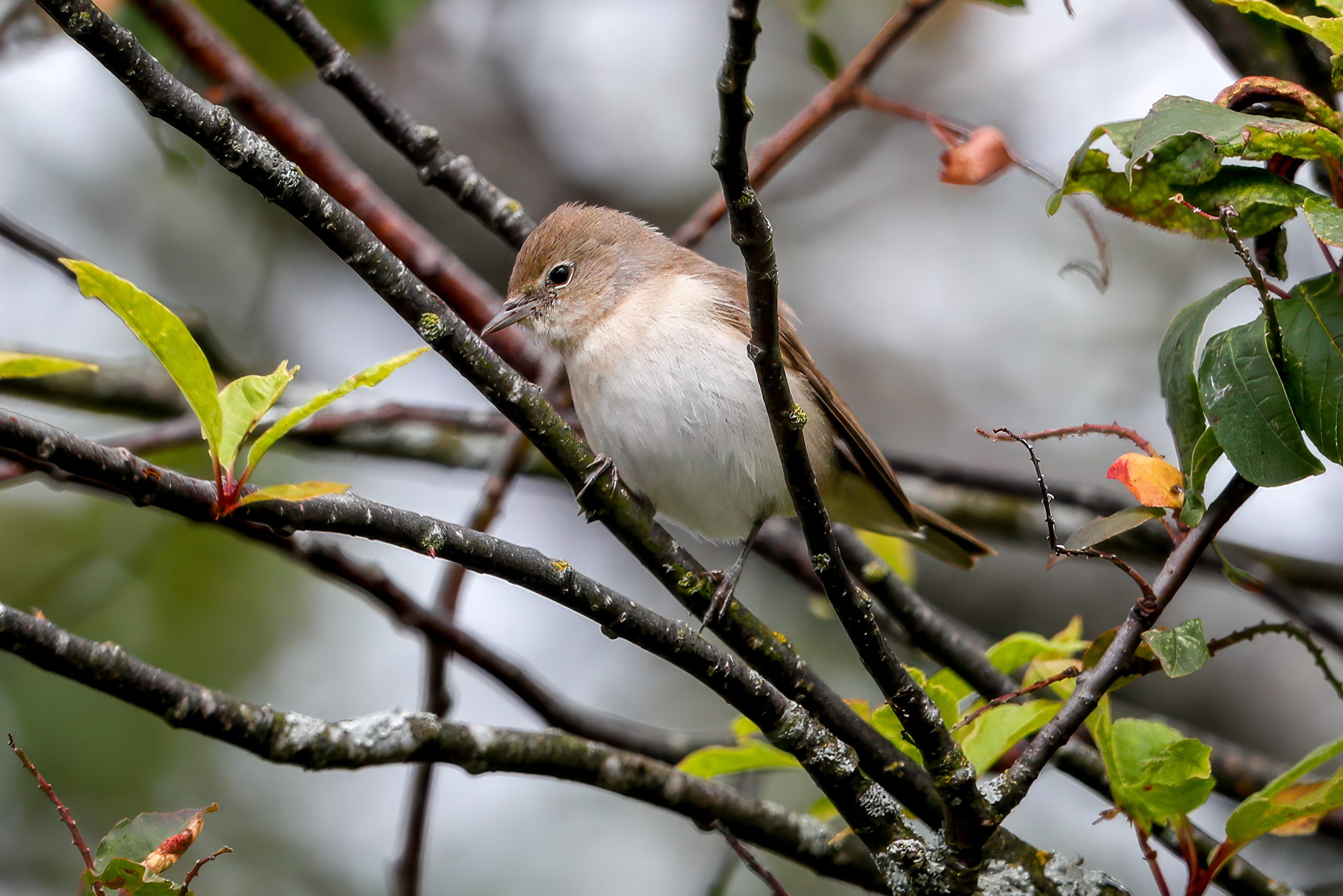Eurasian Blackcap
(Sylvia atricapilla)
Description
The Eurasian blackcap (Sylvia atricapilla) is a medium-sized warbler with a range that stretches across Europe into western Asia and northern Africa. It has a body length of approximately 13-15 cm (5.1-5.9 in) and a wingspan of 20-23 cm (7.9-9.0 in). Males are easily recognized by their black cap, while females and juveniles sport a chestnut-brown cap. Both sexes have greyish bodies with paler undersides, but males typically have slightly darker grey backs compared to females. This species can be confused with the garden warbler (Sylvia borin), but can be distinguished by its cap and the garden warbler’s lack of a complete eye ring.
The Eurasian blackcap’s is also known for its rich and melodious song, which is considered one of the most beautiful among European birds. The song is also very similar to that of the garden warbler, but the song of the blackcap is a bit softer and slower in tempo.
Diet & habitat
Eurasian blackcaps inhabit a wide range of wooded areas including deciduous and mixed forests, parks, and gardens. They are versatile feeders, primarily consuming insects and small invertebrates during the breeding season, and switching to berries and fruits during autumn and winter. Their feeding behavior showcases remarkable adaptability; they can forage in the canopy as well as on the ground, and are known to visit bird feeders in gardens during migration or in their winter quarters.
Migration
Populations of blackcap in northern and eastern Europe migrate to the Mediterranean and sub-Saharan Africa to overwinter, while some western populations are partial migrants or remain resident all year. Interestingly, recent studies have shown a new wintering strategy: an increasing number of blackcaps from the northeastern population are overwintering in Great Britain and Ireland, likely as a result of milder winter temperatures and abundant food sources in these areas.
Nesting
The breeding season for Eurasian blackcaps begins in late April, with nests typically constructed in dense shrubbery or low in trees. The female builds a cup-shaped nest where she lays 4-6 eggs. Both parents are involved in feeding the brood, but the female primarily incubates the eggs for about 11-13 days. Chicks fledge approximately 10-15 days after hatching, showcasing the rapid development necessary for survival in varied environments. Blackcaps are known to be territorial birds, displaying aggressive behaviors to defend their nesting area.
Status
The Eurasian blackcap is widespread and common across its range, and the population numbers are believed to be increasing. It is listed as least concern on the IUCN Red List.




